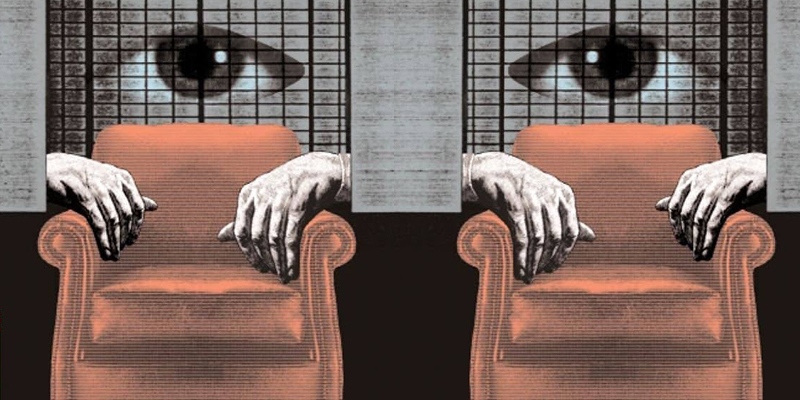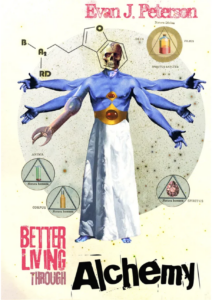I didn’t realize I wrote a noir novel until Better Living Through Alchemy was nearly finished. The book grew out of a big-reveal scene I’d conceived for a short horror story: an occult detective finally tracks down a drug trafficker’s lab, and she finds that the alchemical extraction process is beyond anything she imagined. Being a pantser, I just had to figure out how we transitioned from page one to that climax. With inspirations like William Burroughs and Clive Barker, I knew this would be a dark, weird, queer urban fantasy mystery. It seems that this description adds up to noir, and I’ll take it. Here are some of the writers and works that inspired me along the way.
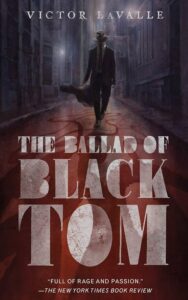
The Ballad of Black Tom, Victor LaValle
H. P. Lovecraft is among the most imaginative, groundbreaking authors of speculative fiction in the early 20th century. He pioneered the cosmic horror subgenre, mixing science fiction with occultism. Even so, his imagination was limited by his misanthropy and virulent bigotry (notably more vicious than a typical “man of his time”). He didn’t seem to recognize that his proto-goth outsider chic excluded most of the outsiders in America. What would his work have given us with those blinders removed?
Victor LaValle’s novella The Ballad of Black Tom takes “The Horror at Red Hook,” one of HPL’s most flagrantly racist stories, and shifts its perspective to that of a Black resident of Harlem. By exploring the same events in a Jazz Age context from an authentically Black American point of view, LaValle takes a mediocre procedural Lovecraft story and builds a whole world—one that will, inevitably, be razed by malevolent alien gods. Maybe that’s not such a terrible thing. For more like this, check out P. Djélí Clark’s Ring Shout.

Dark Tales, Shirley Jackson
Jackson is an absolute goddess of weird, dark fiction. Most of her stories aren’t even supernatural, but they’re often noir and almost always Gothic. Novels like We Have Always Lived in the Castle and The Haunting of Hill House are seminal works of suspense and mystery, but her short stories are gold. “One Ordinary Day With Peanuts,” “The Possibility of Evil,” and “The Witch” are among my favorites. It’s a shame these aren’t taught in classrooms more often, because I was assigned “The Lottery” in English courses about ten times over the years. This woman has done more than “The Lottery.”
While you’re at it, read Daphne Du Maurier’s works, especially “Don’t Look Now.” There’s a reason Hitchcock adapted Du Maurier’s stories into films three times (The Birds, Rebecca, Jamaica Inn). And for a wild mastery of wordcraft, try on Angela Carter, who pulls off the rare feat of writing fiction and nonfiction of equal brilliance.

Japanese Tales of Mystery and Imagination, Edogawa Ranpo
Japanese mystery author Tarō Hirai adopted the pen name Edogawa Ranpo after a phonetic approximation of his idol, Edgar Allen Poe. This man lives up to Poe’s legacy and beyond, being a central figure in Japan’s ero guro nansensu (“erotic grotesque nonsense”) movement. Ranpo’s crime thriller The Black Lizard features a villainess who’d fit easily in a Batman comic or a Bond film, and his more grotesque works are also well before their time. His collected short stories include “The Caterpillar,” about a man who has lost his limbs, speech, and hearing in a war; “The Human Chair”, a piece of metafiction about a furniture maker and his discovery of a new fetish; and The Hell of Mirrors, about a man obsessed with mirrors and optical possibilities. If you like those, Ranpo is a direct inspiration to the ultra-conservative gay sadomasochistic neo-samurai bodybuilder and author, Yukio Mishima. Mishima turns S&M into poetry (and vice versa).
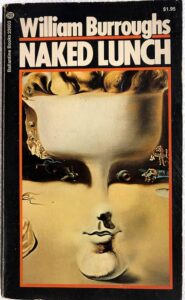
Naked Lunch, William S. Burroughs
I saw Cronenberg’s film adaptation long before I read this book. Cronenberg has subsequently become a huge inspiration, but so has Burroughs. In fact, the book was deemed unadaptable for decades, partly due to its jagged nonlinear storytelling and lack of coherent plot, partly to Burroughs’s zeal for glorifying every taboo imaginable. At its heart, Naked Lunch skewers the hypocrisy of 1950’s Americana and demands that the reader acknowledge the underbelly and those of us who live there by choice or by force. Come for the heroin noir, stay for the queer alien sex-murder. For more mondo bizarro urban noir-o, read China Miéville’s The City and The City or Perdido Street Station.
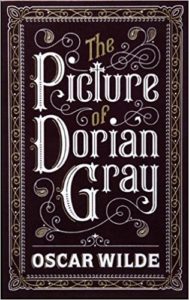
The Picture of Dorian Gray, Oscar Wilde
Wilde’s only novel, Dorian Gray is proto-noir at its urban Gothic best, and it’s got the titular magical element as well. Wilde, I should note, was Irish; magical realism was present in Irish lore long before most publishers got hip to it. I’ve always loved that there’s no explanation offered for the metaphysics of the book. Satan never appears, nothing is signed in blood, but souls are sold in the margins.
The protagonists choose to live in two worlds, descending from the luxury of their aristocratic wealth to get their hands and cocks dirty in London’s late Victorian slums. Inspired by French Decadent literature like Huysmans’s À Rebours (a book Wilde openly read in court during his sodomy trial), the novel and its protagonists revel in excess, casually ruining the lives of those they toy with. The novel boils with opium, sexual libertinism, blackmail, and murder, not to mention doomed pansexual romances. For more Late Victorian speculative proto-noir, make sure to read Stephenson’s The Strange Case of Dr. Jekyll and Mr. Hyde, Machen’s The Great God Pan, and Chambers’ The King in Yellow.
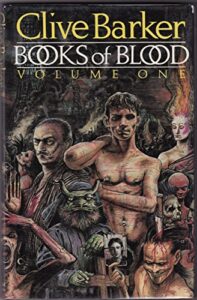
Books of Blood series, Clive Barker
Clive Barker has his fingerprints all over my brain and my heart. Some other organs as well. He writes excellent horror noir and dark urban fantasy, much of it queer. His six Books of Blood contain some of my favorite stories. “The Madonna” features a bizarre subterranean mother goddess and her tricky sirens seducing would-be real estate gangsters. The Last Illusion introduces Harry D’Amour, a recurring Barker character and textbook noir PI, as he deals with a femme fatale and her undead husband. Other stories like “Pig Blood Blues” and “Human Remains” have that delectable horror-noir vibe as well. The novella The Hellbound Heart is also great. For extra credit, read Paul Kane’s Sherlock Holmes and the Servants of Hell, which does an impressive job of combining the Hellraiser and Holmes continuities.
***

